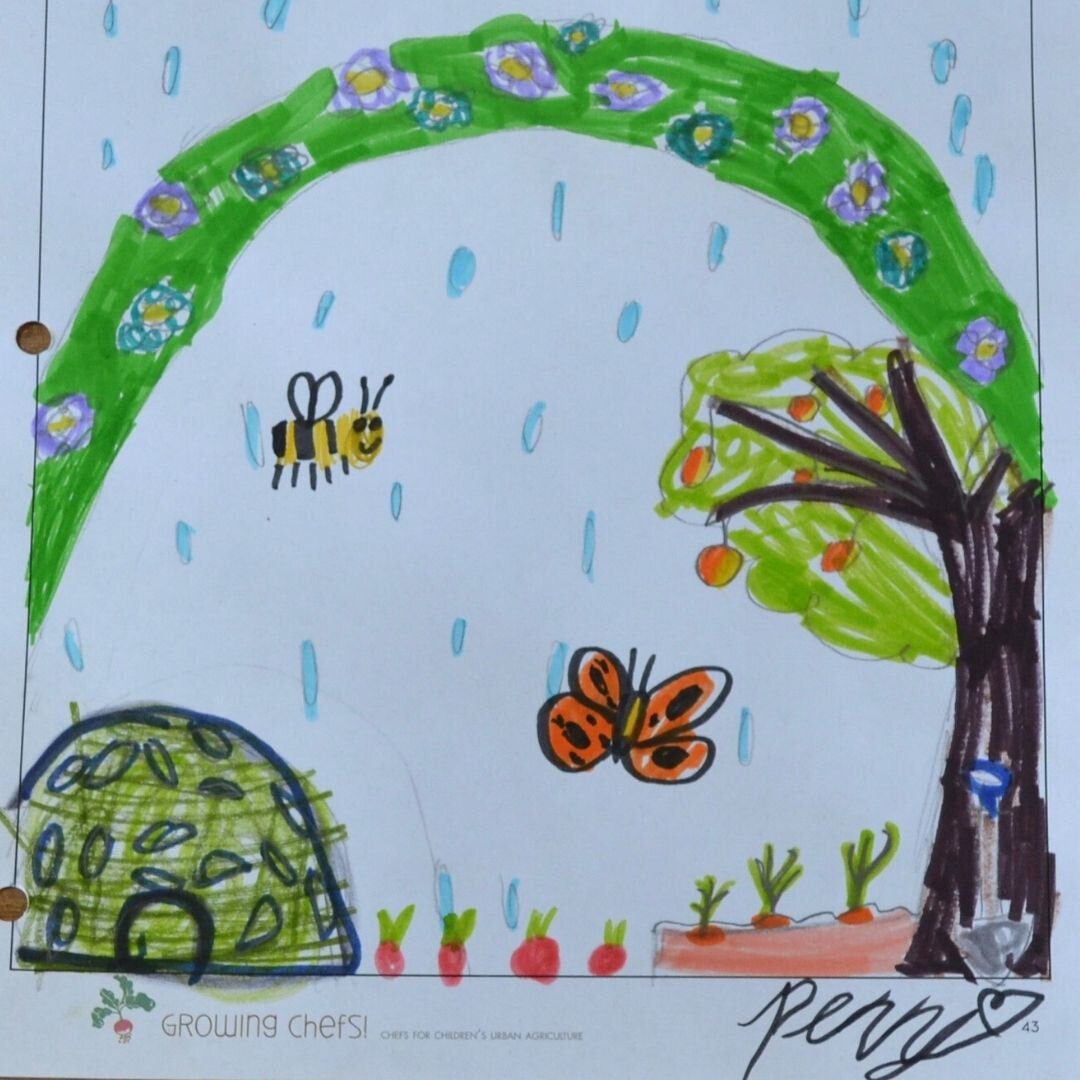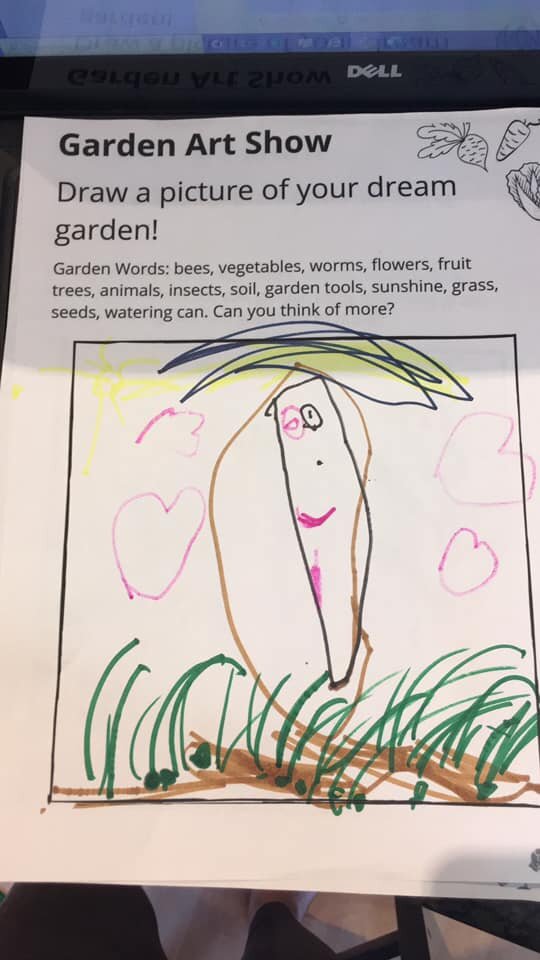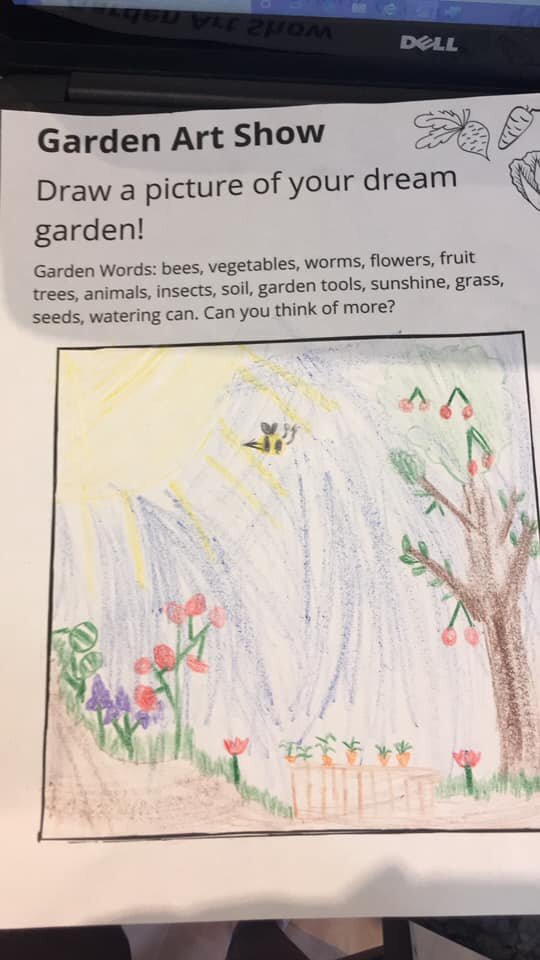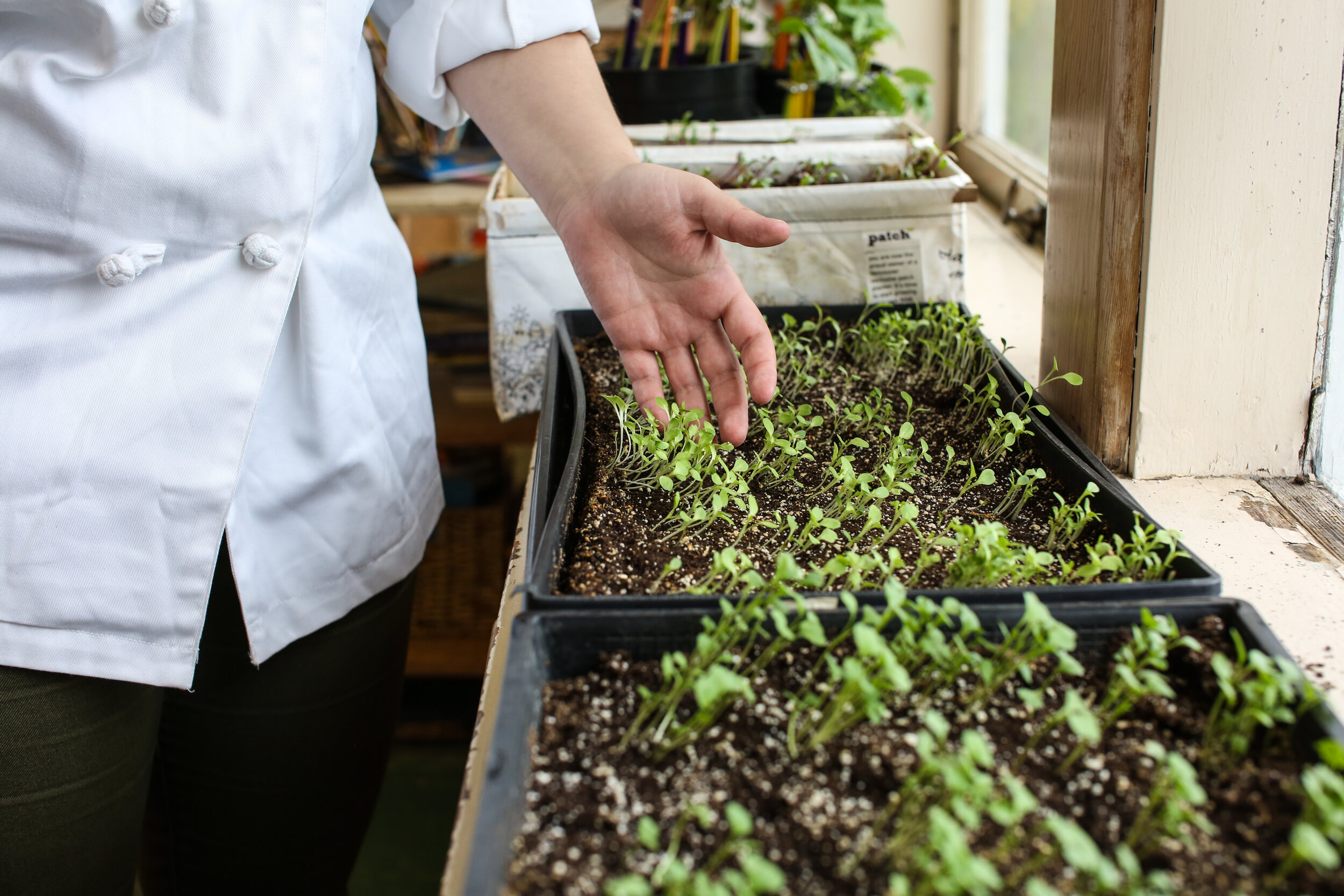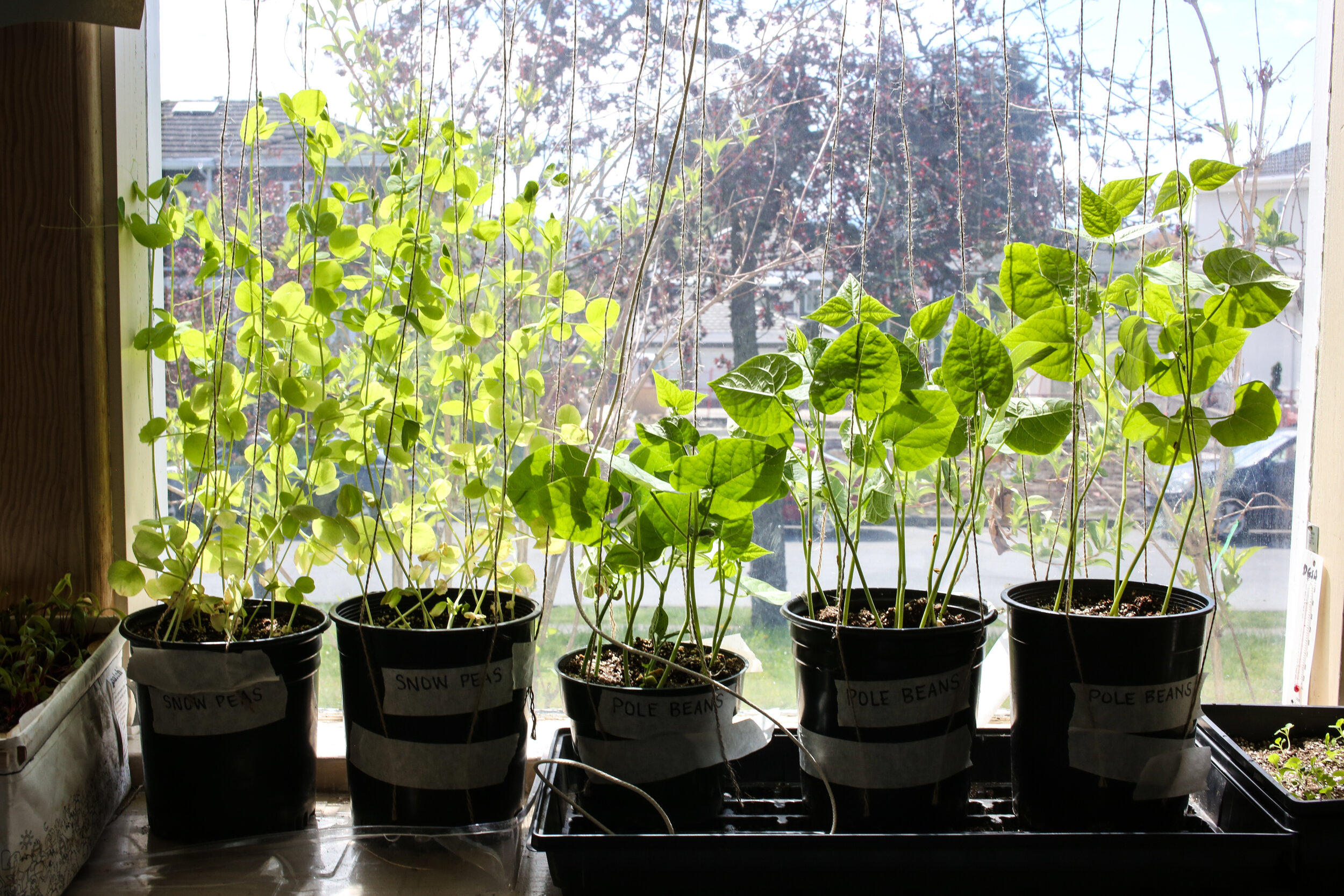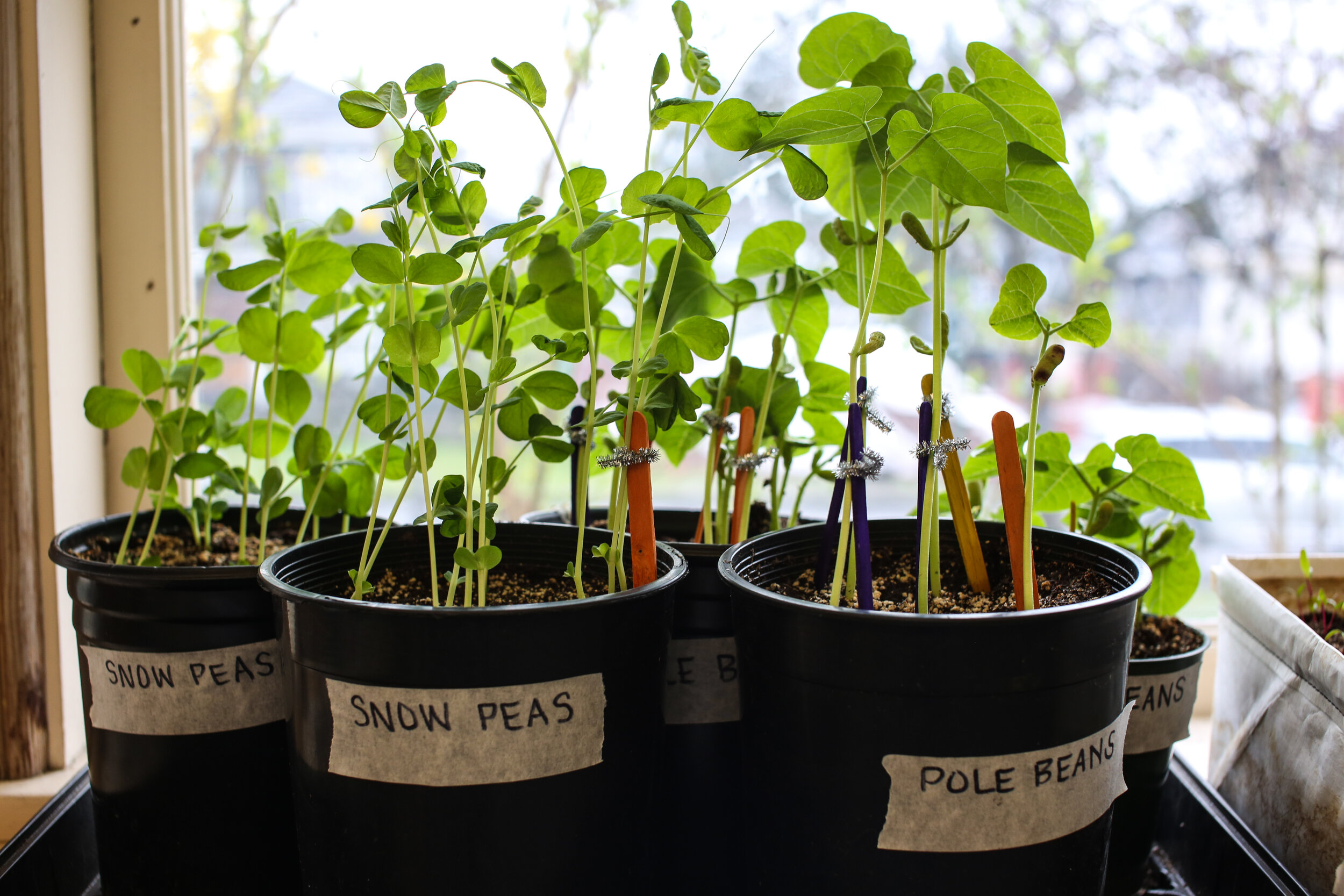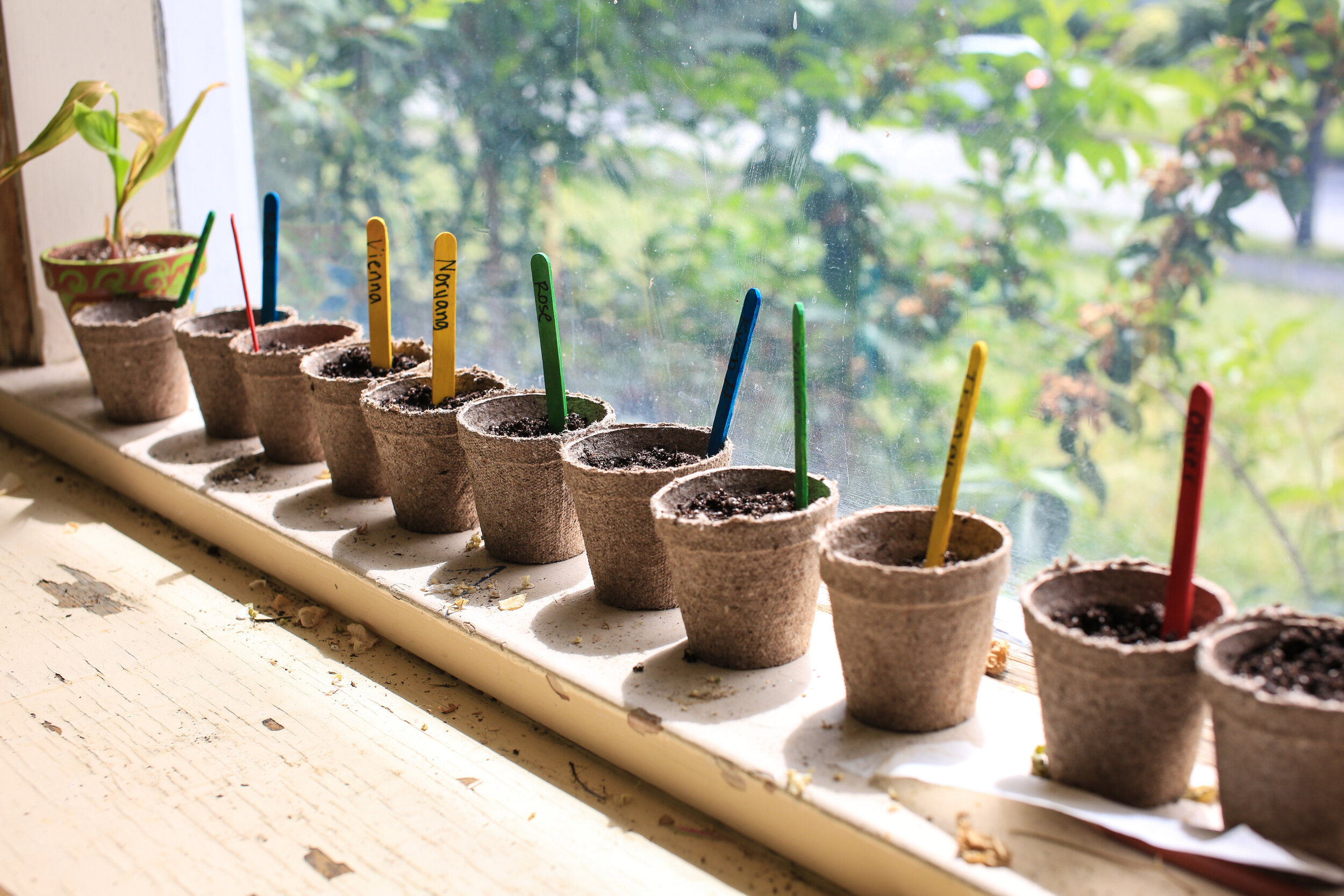When I think of cooking with kids, I automatically envision making a cake with my kiddo when she was a toddler (flour everywhere, sticky hands, big smiles, big mess). Anyone who has cooked with kids knows it can be an adventure. If cooking with kids is on your “want-to-do list” in the coming weeks, here are a few tips to maximize the fun and learning!
Growing Chefs! staff member Afton Bell, and her daughter, Penny
Make a plan:
Before you invite kids to cook with you, take a few minutes to make a plan. Decide what tasks are safe (and fun) for kids or how tasks can be modified to suit a child better. For example, a kid can break up green beans by hand instead of using a knife. You know the kids best – pick tasks that suit their age, maturity, and abilities. You can change it up as you go, but a plan it's a good place to start.
Pick your tools:
Select kitchen tools that are the correct size and weight (hint… don’t let kids use your largest kitchen knife). A stool (to stand on) or a small table (to stand at) can be really helpful to ensure that younger children are able to work comfortably and safely.
Talk about safety:
Talk with kids about safety; including what is hot and sharp and any items that may be off-limits. Chat with kids about how being calm and respectful in the kitchen is essential. If anything feels unsafe; modify or stop the activity. Remember to talk about (and practice) frequent hand-washing.
Stay in the moment:
Now is not the time to multi-task. Pay attention to what the kids are doing – this will keep things safe and on track. Plus, staying present will be more meaningful for both you and the kids.
It doesn’t have to be Instagram-worthy:
Involve kids in the making of day-to-day (not so Instagram-worthy items). Making toast, opening a can of beans, and scrambling an egg are great basic lessons. These simple meals require almost no prep or pre-planning and still teach valuable skills.
Expect some spills and embrace the adventure:
Little hands are very capable, but their dexterity and enthusiasm are not always the same as an adult. Expect some muffin batter to land outside the muffin cups and some ingredients to end up in their tummy. Try to enjoy the imperfect perfection of something created by a kid and allow kids (and yourself) to taste, experiment, and create; it is all part of the adventure!
Have Fun and Enjoy!
Penny, Age 7






